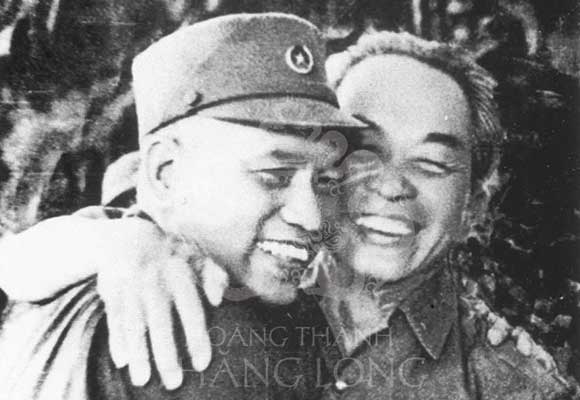

On January 27, 1973, The Accord on ending
the war and restoring peace in Vietnam was
signed. The negotiations had taken five years
before the Accord was signed. Under the
Accord, the United States and other countries
had to respect the independence, sovereignty,
unity and territorial integrity of Vietnam;
and to withdraw troops from Vietnam. The
victory had brought Vietnam into another stage
of development.
Subsequent to the Accord, the Labour Party
affirmed that “the revolution of the South
will resort to revolutionary violence” and
emphasized the role of a struggle against the
US plot to break the Paris Peace Accord and
the Administration of the Republic of Vietnam.
In the same way, the Party affirmed that the
North would be a great rear to give support to
the frontlines in the South; and that the
mission to liberate the South and to unify
the nation had to be accomplished.
On 27 January 1973, in Paris, “The
Accord on ending the war and
restoring peace in Vietnam” was
signed by four Parties including The
Democratic Republic of Vietnam, The
Provisional Government of the
Republic of South Vietnam, the United
States and The Republic of Vietnam.
The negotiations took five years
(13/5/1968 - 27/1/1973) before the
Accord was signed; The negotiations
included:
+ 201 open meetings
+ 45 closed meetings

Under the agreement, the United States and other countries had to respect
the independence, sovereignty, unity and territorial integrity of Vietnam.
After the signature of the Paris
Peace Accord, the Us President,
Nixon received the President of
the Republic of Vietnam Nguyễn
Văn Thiệu at his own residence
(known as the Western White
House) in San Clemente,
California, US. The meeting was
to ensure the continuity of
military and financial support
from the US Government.

Facing a novel situation, in July, 1973, Central Committee of Vietnamese Communist Party (Third Term) held the 21st conference. The Committee, especially, stressed mission of the South Vietnam revolution in a new phase: “The implementation of a strategy of people’s democratic revolution, and the establishment of peace, independence, democracy, neutrality, prosperity for the South, which will facilitate the liberation and unity of Vietnam”.
VIEW PANO
The revolution of the Southentered another stage; the North provided more assistance for front line in the South. The Party, army and people of Vietnam concentrated their efforts into the last fight.
VIEW PANO
The Spring 1975 general offensive and uprising showed excellent
leadership of the Political Bureau and The Military Commission of the
Party Central Committee through strategic directions in combats and
great vision to be able to seize the opportunity to liberate the South.
The Political Bureau chose the Central Highlands as the first target
to start the General offensive and uprising. On March 10, 1975, main
forces of the Vietnam People's Army opened fire and liberated Buôn Mê
Thuột. This victory had a great significance at the beginning of the
campaign
After successive defeats, the Republic of Vietnam army withdrew from
the Central Highlands to Huế, Đà Nẵng and the Central coastal plain. In
this situation, the Political Bureau and The Military Commission of the
Party Central Committee directed the forces to continuously attack,
destroy a number of enemy forces; taking opportunity to liberate Huế
(March 25, 1975) and Đà Nẵng (March 29, 1975).
In early April 1975, under the order “activeness, bravery,
unpredictability and victory” from the Headquarters, the main forces and
the local people launched attacks on coastal provinces in Central
Vietnam. At the same time, from April 14 to April 29, 1975, High Command
of Navy managed to liberate the islands in the Spratly Islands (Trường
Sa) and the islands in Eastern Sea (Biển Đông).
At 11:30, April 30, 1975, the Liberation flag flew from the roof-top
of the Presidential Palace of the Republic of Vietnam, giving the signal
of a complete victory of Hồ Chí Minh campaign - the last campaign of the
the Spring 1975 general offensive and uprisings.
Members of Political Bureau attended the open
conference that was chaired by comrade Lê Duẩn
(stood in the middle) - The First Secretary of
Central Committee of the Labour Party; as seen
from the left are comrade Phạm Hùng (the second
man), General Võ Nguyên Giáp (the fourth man),
comrade Lê Đức Thọ. As seen from the right are
General Văn Tiến Dũng, comrade Trường Chinh and
Comrade Phạm Văn Đồng.
Political Bureau concluded that:
based on the 2-year strategic plan
(1975 and 1976), it stressed that the
whole 1975 will be appropriate time,
and if it falls in early or late
1975, the liberating of the South
will have to be achieved in 1975.

At General Headquarters (House D67); during the open conference held by Political Bureau; on December 27, 1974, based on the proposal of Comrade Phạm Hùng and Lieutenant General Trần Văn Trà, Political Bureau and the Military Commission of the Party Central Committee gave an order for the forces in Southeast Vietnam to launch an attack on Phước Long province.
VIEW PANO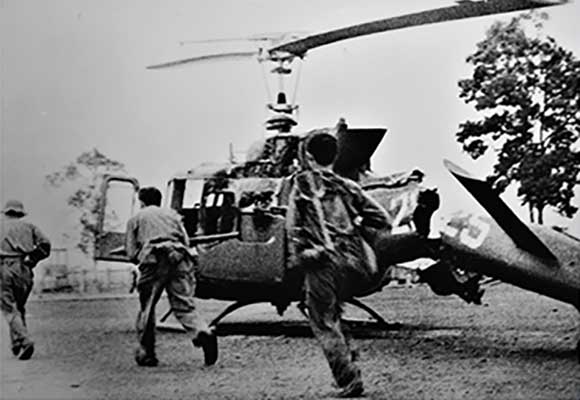
February 1975, To reinforce the leadership, and to command the Spring 1975 offensive campaign, especially, to ensure the victory of the Central Highland Campaign; Political Bureau and the Military Commission of the Party Central Committee sent General Văn Tiến Dũng to the South battlefield, which formed a representative division of High command in the South battlefield (its code name: A75).
VIEW PANO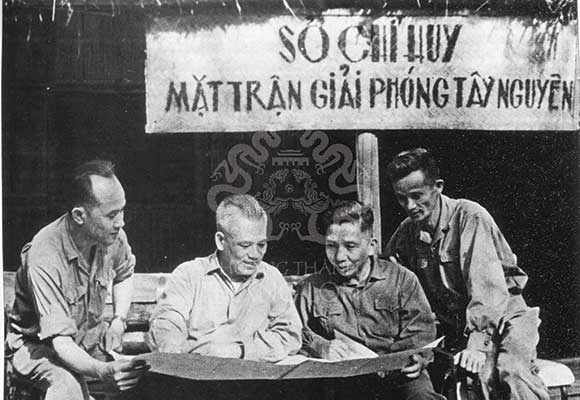
When the Central Highlands campaign was nearing a victory, at the General Headquarters (House D67), Political Bureau and the Military Commission of the Party Central Committee held a conference in a rush.
VIEW PANO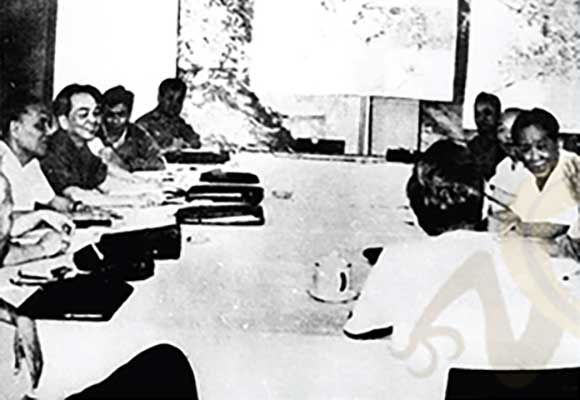
Troops of Liberation Army entered Ngọ Môn gate, in front of the Imperial City of Huế
VIEW PANO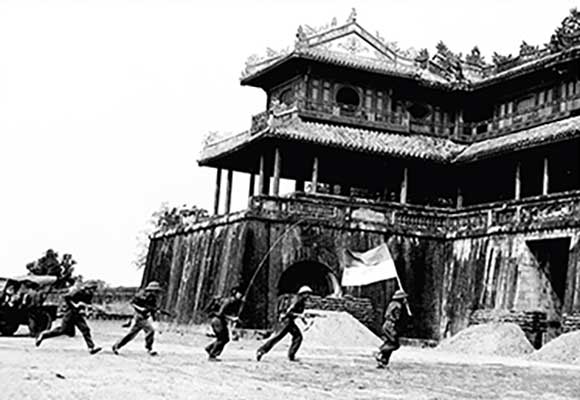
When Huế was nearing its liberation, the
army of the Republic of Vietnam fled to
Đà Nẵng, at General Headquarters (House
D67), Political Bureau held a conference
in a rush.
Political Bureau concluded
that: The time has come, what is
intended to be done in twenty years
now can be done within one day.
Seize the opportunity and take
prompt action; be brave and
unpredictable; We have to liberate
Sài Gòn before the rainy season.
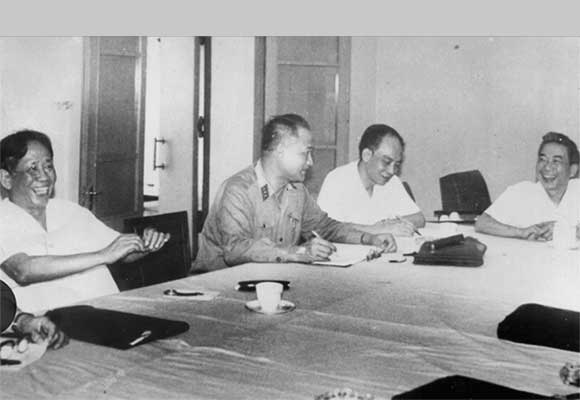
Troops of Liberation Army
took control of agencies
and units in Đà Nẵng city
that had been owned by
the administration and
units of the Republic of
Vietnam before
Tens of thousands of
troops of the Republic of
Vietnam in Quảng - Đà
presented themselves to
the revolutionary
government
The people of Đà Nẵng
city poured out the road
to welcome the liberation
troops
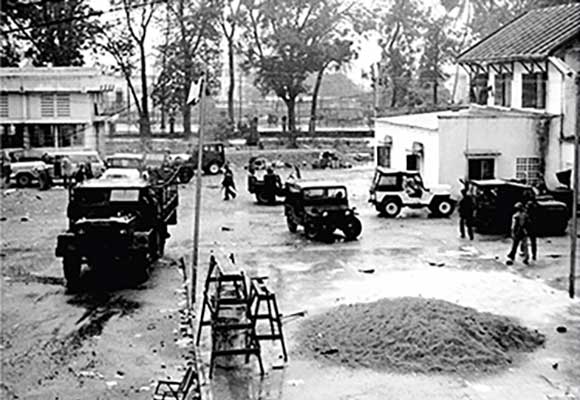
At the Headquarters (House
D67), the Military
Commission of the Party
Central Committee held a
meeting on March 31, 1975
and decided to launch a
general offensive campaign
that was intended to
liberate the South in a
shortest period of time,
and the best time would be
in April 1975.
“Activeness, bravery,
unpredictability, victory”
was issued as a guideline.
April 7, 1975
General Võ Nguyên
Giáp-Secretary of The
Military Commission of
the Party Central
Committeesent a secret
telegram No.1574 that
said as follows: “Be
more and more active, Be
braver and Braver. Try
to get to the front in a
shortest time and
liberate the South.Be
determined to fight for
winning the victory”.
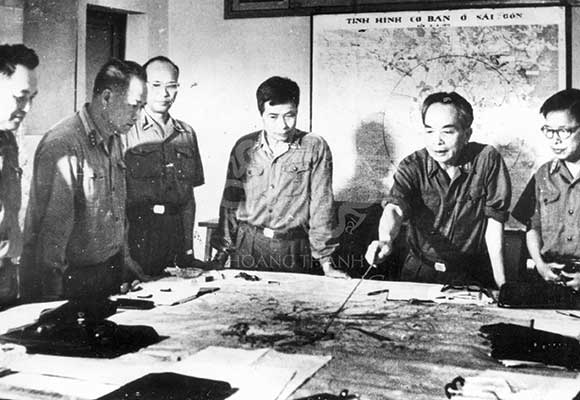
April 14, 1975 At the General Headquarters (House D67), the Political Bureau held a meeting and then passed an edict No. 37/k on the launching of a campaign to liberate Sài Gòn - Gia định, and naming the campaign Hồ Chí Minh. A meeting that was chaired by comrade Lê Duẩn - the First Secretary (the third man who sat on the right) took place, the attendants included comrade Trường Chinh, comrade Lê Hữu Đức (Director of Operation Bureau); the man who was speaking (on the right) was General Võ Nguyên Giáp
VIEW PANO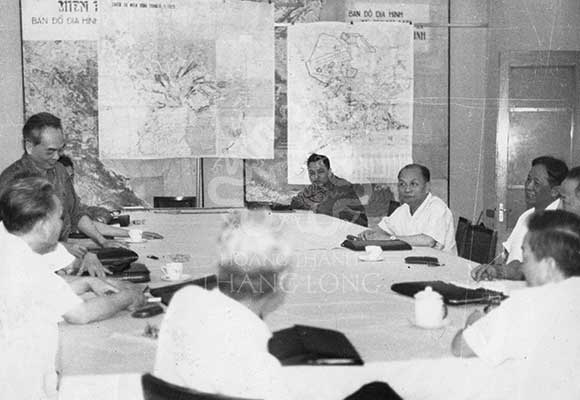
The map illstrating Hồ Chí Minh campaign. On April 26, 1975, from five directions, the forces of Liberation Army opened fire on Sài Gòn
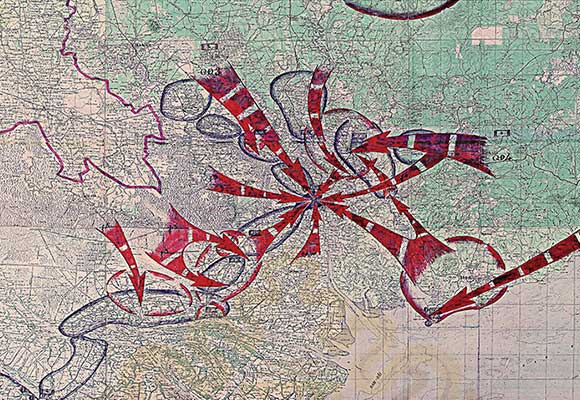
The Republic of Vietnam -
A 8-day term with two Presidents
April 28, 1975 -
Trần Văn Hương resigned, General
Dương Văn Minh succeeded
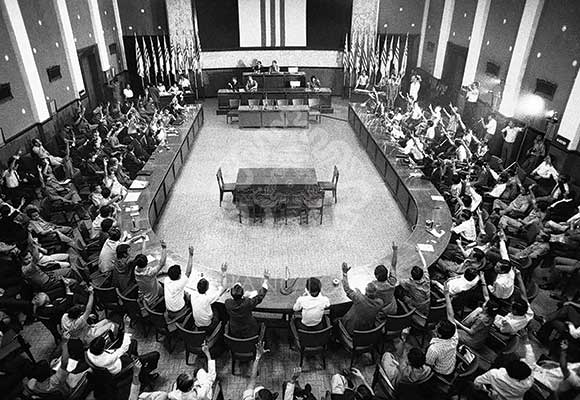
April 24, 1975
The White House was in a hurry to implement
a plan toevacuate the American from Sài Gòn
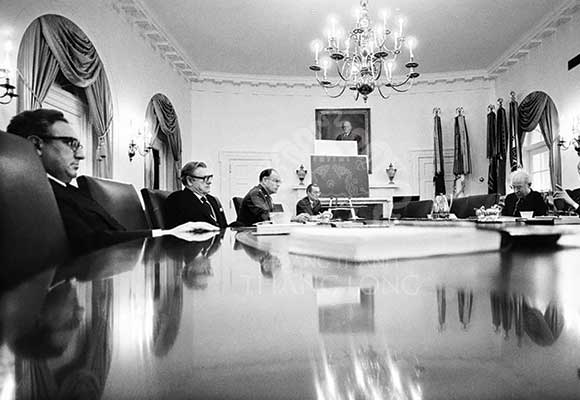
April 26, 1975 -
Opening fire on
Sài Gòn
April 28, 1975 -
Biên Hòa was liberated
April 29, 1975
Spratly Islands were
liberated
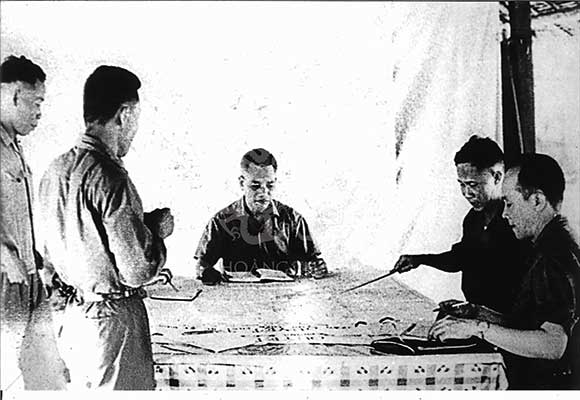
April 29, 1975 - White House and Operation Frequent Wind
VIEW PANO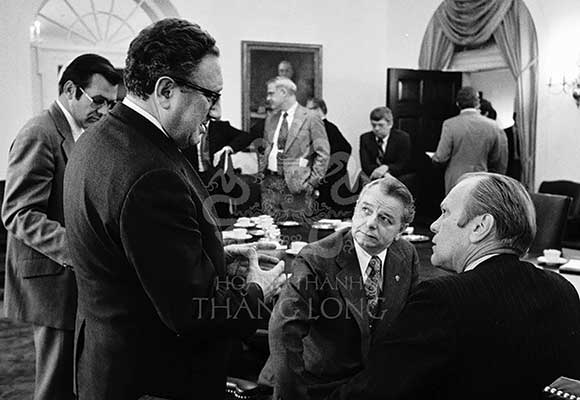
Ngày 29/4/1975
Sài Gòn was in chaos
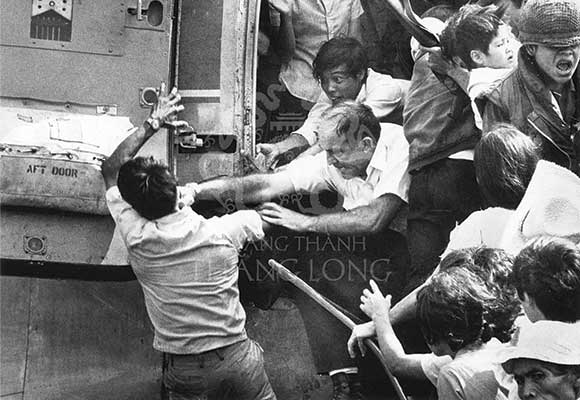
April 30, 1975 The fall of Sài Gòn
VIEW PANO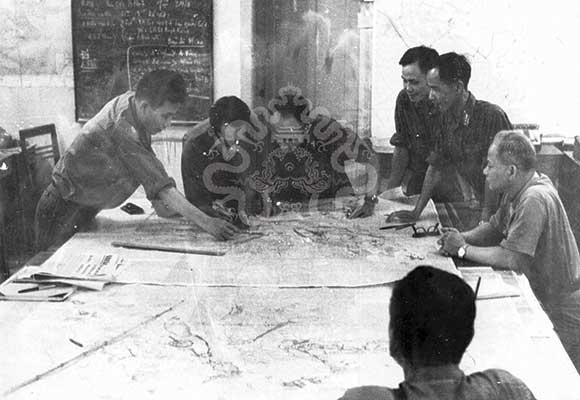
At 11:30, On April 30th, 1975, a Vietnam flag was planted on the roof-top of the Independence Palace, which gave a signal of the complete victory of Hồ Chí Minh campaign. Liberation Army was merrily welcomed by people when the troops moved into Sài Gòn and took over the city. Military Administrative Committee of Sài Gòn was instantly founded, and it was chaired by Senior Lieutenant General Trần Văn Trà. The committee was to ensure the public order and security of the city.
In Hà Nội, in a memorable moment, several tens of thousands of people came out on the streets marching to celebrate the victory of the nation. At the General Headquarters (House D67), the officers who were monitoring the happenings of the campaign paused their work to welcome the news of victory. According to the Memoirs by General Võ Nguyên Giáp, “Happy loud laughters and talks from all corners of the nation, People were so excited and moved to tears... everybody thought of Uncle Hồ (Hồ Chí Minh)”.
VIEW PANO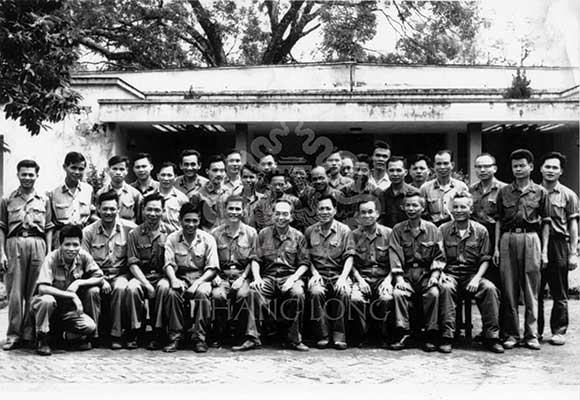
Sai Gon People flocked to the Independence Palace to welcome Liberation Army on April 30th, 1975
VIEW PANO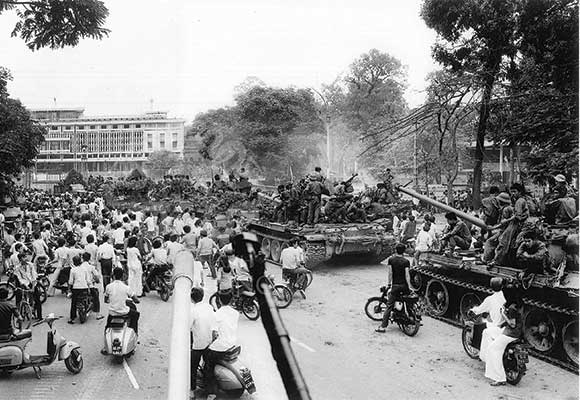
After hearing from the news of Saigon’s victory, Several tens of thousands of young people of the Capital came out on the streets to celebrate the victory of the nation, April 30th, 1975
VIEW PANO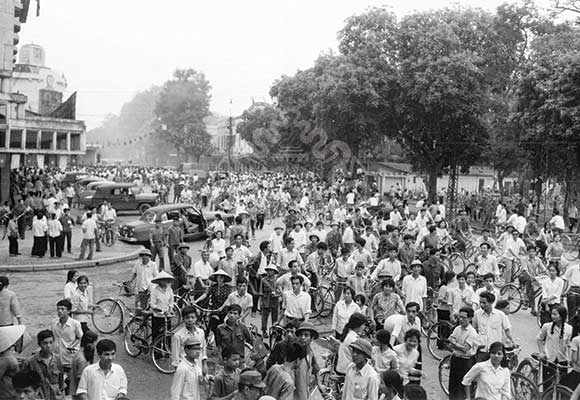
Saigon people came out on the streets to welcome troops of Liberation Army, April 30th, 1975
VIEW PANO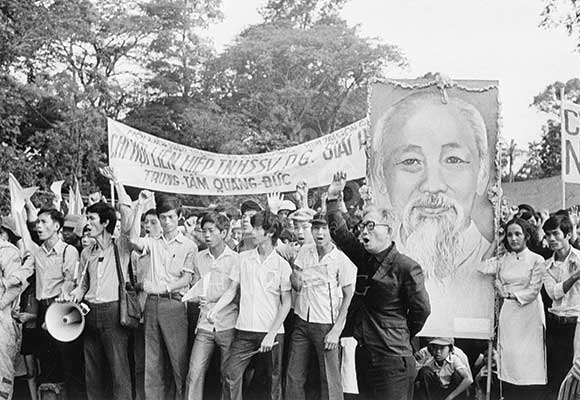
Saigon people paraded past a square to celebrate the victory, May 15, 1975
VIEW PANO